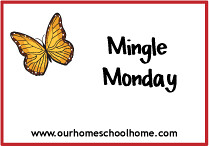In the supermarket, you will find carrots both with and without their green, leafy tops or even baby carrots. Regardless, all carrots should be firm and smooth. Avoid those that are cracked or that have begun to soften. The best, tastiest carrots are young and skinny. Tiny baby carrots are very tender, but don't have as much flavor as their full-grown siblings. And if you buy carrots with tops, be sure to remove the tops right away so your carrots will keep longer.
Carrots originated in Central Asia and the Near East, where they grew in a variety of colors, including white, yellow, green or purple...but not orange! And, their first use was medicinal, not for food. Physicians prescribed using carrot juice to treat cancer, indigestion, snake bites and skin ulcers. Grimmway Farms, the world leader is carrot production (and located in Californic) has a cool "Fun Zone" on their site as well as lots more interesting history, recipes and buying tips for carrots.
In the Middle Ages, ladies used green, leafy carrot tops as decorations in their hair. Although you may not be willing to make that style leap, you can grow a leafy plant from a carrot top. Just keep in mind that since carrots grow underground from seeds, this plant will not grow a carrot to eat. This experiment can also be done with the tops of beets, turnips and parsnips. Here's what to do:
- Cut a 1/2-inch slice from the top of a carrot.
- Wet a paper towel with water. Lay it in the bottom of a plastic container.
- Place the cut side of the carrot on the wet paper.
- Put the container near a sunny window. Give it a little water every day or so to keep the paper wet. Leaves should begin to grow in about a week.
This 1945 classic book has been in print continuously since its initial publication over 60 years ago. It was one of the shortest picture books ever published when it was first released, and it follows a little boy's hope and hard work as he plants his carrot seed and wait patiently for it to grow.
This series is inspired by the book The ABC's of Fruits and Vegetables and Beyond.














